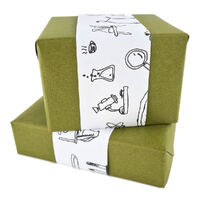 Roman Catapult
Roman Catapult
Roman Catapult
1 Review Read review...
A working re-creation of a Roman Catapult
Enjoy this exciting hands-on project, perfect for history buffs, engineering beginners or inquisitive minds. Plus.. and it's great fun to launch your own miniature items! Keep Reading
Roman Catapult Description
The catapult was first designed more than 2000 years. During the Roman Empire, it was used in many battles and sieges.
This Roman Catapult model represents a smaller version of a common catapult style of the time. A re-creation of the tension-powered siege engines used by the Roman soldiers. It can fire small clay balls (included) and other soft projectiles up to 4.5 metres!
Your completed catapult will measure approximately 360 x 280 x 240mm.
Included in the kit is everything you'll need to build your Roman Catapult:
- Instruction booklet
- Over 20 pre-cut and pre-drilled pieces, cut from natural, untreated wood
- Dowels
- Sandpaper
- Glue
- String
- Clay
* The pictured plastic figures are not included in your kit.
Recommended for ages 14 and up.
With a design that is easy to put together, this historical re-creation is perfect for young engineers and history buffs.
Launch into the fun of engineering and build your own Roman Catapult!
Shipping & Delivery
Pop your order in before 12 Noon Mon - Fri and if everything is in stock we’ll dispatch it that day guaranteed for you. This excludes public holidays of course.
You have two options to get your entire order shipped, standard delivery for $10 or our express service for $15 (excludes bulky items as labelled, some remote areas, and packages that are over 2kg). See shipping calculator on cart for accurate Express pricing.
All your selections are sent with full tracking so you keep an watch on them as they progress to your delivery address. You can easily check the progress of your entire order by clicking on the tracking link in your dispatch email.
Roman Catapult Reviews
Blown away!
(5)By: Melanie C on 28 November 2020My son was blown away by this cool catapult. Postage was reasonable and super fast delivery! Will definitely order through this site again!
Roman Catapult Specifications
| SKU | 6731 |
| Barcode # | 615872472888 |
| Brand | Pathfinders |
| Shipping Weight | 0.5400kg |
| Related Categories | Engineering Gifts, Engineer Gifts & Gift Ideas for All Ages Building & Construction Toys Science Gifts, Science Toys & Gift Ideas Science Gifts for Kids Science Gifts for Boys Science Gifts for Girls |
Other People Also Bought
When people buy Roman Catapult they normally buy these too:
More From Science Gifts for Boys
Most popular from the Science Gifts for Boys category:



















